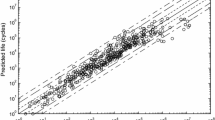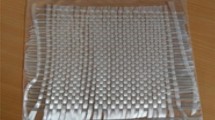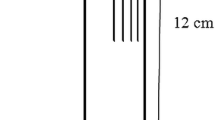Abstract
Methods to estimate the strain–life curve, which were divided into three categories: simple approximations, artificial neural network-based approaches and continuum damage mechanics models, were examined, and their accuracy was assessed in strain–life evaluation of a direct-quenched high-strength steel. All the prediction methods claim to be able to perform low-cycle fatigue analysis using available or easily obtainable material properties, thus eliminating the need for costly and time-consuming fatigue tests. Simple approximations were able to estimate the strain–life curve with satisfactory accuracy using only monotonic properties. The tested neural network-based model, although yielding acceptable results for the material in question, was found to be overly sensitive to the data sets used for training and showed an inconsistency in estimation of the fatigue life and fatigue properties. The studied continuum damage-based model was able to produce a curve detecting early stages of crack initiation. This model requires more experimental data for calibration than approaches using simple approximations. As a result of the different theories underlying the analyzed methods, the different approaches have different strengths and weaknesses. However, it was found that the group of parametric equations categorized as simple approximations are the easiest for practical use, with their applicability having already been verified for a broad range of materials.











Similar content being viewed by others
Abbreviations
- AISI:
-
American Iron and Steel Institute
- ANN:
-
Artificial neural network
- ASTM:
-
American Society for Testing and Materials
- BPA:
-
Backpropagation algorithm
- CDM:
-
Continuum damage mechanics
- CEV:
-
Carbon equivalent value
- HB:
-
Brinell hardness
- HV:
-
Vickers hardness
- LCF:
-
Low-cycle fatigue
- RA:
-
Reduction in area
- SAE:
-
Society of Automotive Engineers
- SAV:
-
Strain amplitude variation
- b :
-
Fatigue strength exponent
- c :
-
Fatigue ductility exponent
- C :
-
Constant parameter
- C 1, C 2 :
-
Material constants
- D :
-
Damage variable
- D c :
-
Critical damage
- D N :
-
Damage corresponding to N cycles
- D 0 :
-
Initial damage
- E :
-
Young’s modulus
- E′ :
-
Effective Young’s modulus
- K :
-
Strength coefficient
- K′ :
-
Cyclic strength coefficient
- n :
-
Strain hardening exponent
- n′ :
-
Cyclic strain hardening exponent
- N :
-
Number of cycles
- N t :
-
Transition fatigue life
- 2N f :
-
Reversals to failure
- R :
-
Correlation coefficient
- S e :
-
Endurance limit
- \(\Delta \varepsilon\) :
-
Strain range
- \(\varepsilon_{\text{a}}\) :
-
Strain amplitude
- \(\varepsilon_{\text{e}}\) :
-
Elastic strain
- \(\varepsilon_{ est }\) :
-
Estimated strain
- \(\varepsilon_{\text{exp}}\) :
-
Experimental strain
- \(\varepsilon_{\text{f}}\) :
-
True fracture strain
- \(\varepsilon_{\text{p}}\) :
-
Plastic strain
- \(\varepsilon_{\text{f}}^{{\prime }}\) :
-
Fatigue ductility coefficient
- \(\varepsilon_{0}\) :
-
Threshold strain
- \(\sigma\) :
-
Nominal stress
- \(\tilde{\sigma }\) :
-
Effective stress
- \(\sigma_{\text{ave}}\) :
-
Average strength
- \(\sigma_{\text{f}}\) :
-
True fracture strength
- \(\sigma_{\text{u}}\) :
-
Ultimate tensile strength
- \(\sigma_{\text{y}}\) :
-
Yield strength
- \(\sigma_{\text{f}}^{{\prime }}\) :
-
Fatigue strength coefficient
- \(\sigma_{\text{y}}^{{\prime }}\) :
-
Cyclic yield strength
References
S. Manson, Fatigue: A Complex Subject—Some Simple Approximations, Exp. Mech., 1965, 5, p 193–226
M. Mitchell, D. Socie, and E. Caulfield, Fundamentals of Modern Fatigue Analysis, Fracture Control Program, No. 26, University of Illinois (1977)
U. Muralidharan and S. Manson, A Modified Universal Slopes Equation for Estimation of Fatigue Characteristics of Metals, J. Eng. Mater. Technol., 1988, 110, p 55–58
B.T. Seeger and C. Boller, Materials Data for Cyclic Loading: Supplement 1, Elsevier, Amsterdam, 1990
J. Ong, An Improved Technique for the Prediction of Axial Fatigue Life from Tensile Data, Int. J. Fatigue, 1993, 15, p 213–219
M. Roessle and A. Fatemi, Strain-Controlled Fatigue Properties of Steels and Some Simple Approximations, Int. J. Fatigue, 2000, 22, p 495–511
M. Meggiolaro and J. Castro, Statistical Evaluation of Strain-Life Fatigue Crack Initiation Predictions, Int. J. Fatigue, 2004, 26, p 463–476
J. Park and J. Song, New Estimation Method of Fatigue Properties of Aluminum Alloys, J. Eng. Mater. Technol., 2003, 125, p 208–214
J. Park and J. Song, Detailed Evaluation of Methods for Estimation of Fatigue Properties, Int. J. Fatigue, 1995, 17, p 365–373
K. Lee and J. Song, Estimation Methods for Strain-Life Fatigue Properties from Hardness, Int. J. Fatigue, 2006, 28, p 386–400
J. Pujol and J. Pinto, A Neural Network Approach to Fatigue Life Prediction, Int. J. Fatigue, 2011, 33, p 313–322
T. Pleune and O. Chopra, Using Artificial Neural Networks to Predict the Fatigue Life of Carbon and Low-Alloy Steels, Nucl. Eng. Des., 2000, 197, p 1–12
V. Srinivasan, Low Cycle Fatigue and Creep–Fatigue Interaction Behavior of 316L(N) Stainless Steel and Life Prediction by Artificial Neural Network Approach, Int. J. Fatigue, 2003, 25, p 1327–1338
K. Genel, Application of Artificial Neural Network for Predicting Strain-Life Fatigue Properties of Steels on the Basis of Tensile Tests, Int. J. Fatigue, 2004, 26, p 1027–1035
R. Basan, M. Franulovic´, I. Prebil, and N. Črnjarić-Žic, Analysis of Strain-Life Fatigue Parameters and Behaviour of Different Groups of Metallic Materials, Int. J. Fatigue, 2011, 33, p 484–491
S. Dhar, P. Dixit, and R. Sethuraman, A Continuum Damage Mechanics Model for Ductile Fracture, Int. J. Press. Vessels Pip., 2000, 77, p 335–344
H. Costa Mattos, G. Minak, F. Di Gioacchino, and A. Soldá, Modeling the Superplastic Behavior of Mg Alloy Sheets Under Tension Using a Continuum Damage Theory, Mater. Des., 2009, 30, p 1674–1679
S. Oller, O. Salomón, and E. Oñate, A Continuum Mechanics Model for Mechanical Fatigue Analysis, Comput. Simul. Mater. Sci., 2005, 32, p 175–195
Y. Xiao, S. Li, and Z. Gao, A Continuum Damage Mechanics Model for High Cycle Fatigue, Int. J. Fatigue, 1998, 20, p 503–508
S. Silitonga, J. Maljaars, F. Soetens, and H. Snijder, Survey on Damage Mechanics Models for Fatigue Life Prediction, HERON, 2013, 58, p 25–60
V. Dattoma, S. Giancane, R. Nobile, and F. Panella, Fatigue Life Prediction Under Variable Loading Based on a New Non-linear Continuum Damage Mechanics Model, Int. J. Fatigue, 2006, 28, p 89–95
S. Giancane, R. Nobile, F. Panella, and V. Dattoma, Fatigue Life Prediction of Notched Components Based on a New Nonlinear Continuum Damage Mechanics Model, Proced. Eng., 2010, 2, p 1317–1325
C.L. Chow and Y. Wei, A Model of Continuum Damage Mechanics for Fatigue Failure, Int. J. Fract., 1991, 50, p 301–316
W. June, A Continuum Damage Mechanics Model for Low-Cycle Fatigue Failure of Metals, Eng. Fract. Mech., 1992, 41, p 437–441
N. Bonora, Low Cycle Fatigue Life Estimation for Ductile Metals Using a Nonlinear Continuum Damage Mechanics Model, Int. J. Solids Struct., 1998, 35, p 1881–1894
B. Bhattacharya and B. Ellingwood, A New CDM-Based Approach to Structural Deterioration, Int. J. Solids Struct., 1999, 36, p 1757–1779
J. Kömi, P. Karjalainen, and D. Porter, Direct-Quenched Structural Steels, Encyclopedia of Iron, Steel, and Their Alloys, CRC Press, Boca Raton, 2016, p 1109–1125
Standard Test Method for Strain-Controlled Fatigue Testing, ASTM Standard E606. American Society for Testing and Materials, West Conshohocken (2013)
Standard practice for statistical analysis of linear or linearized stress-life (S–N) and strain-life (ε − N) fatigue data, ASTM Standard E739. American Society for Testing and Materials, West Conshohocken (2004)
M. Dabiri, M. Isakov, T. Skriko, and T. Björk, Experimental Fatigue Characterization and Elasto-Plastic Finite Element Analysis of Notched Specimens Made of Direct-Quenched Ultra-High Strength Steel, Proc. Inst. Mech. Eng, Part C, 2017, 231, p 4209–4226
R. Basan, D. Rubeša, M. Franulović, and B. Križan, A Novel Approach to the Estimation of Strain Life Fatigue Parameters, Proced. Eng., 2010, 2, p 417–426
E.J. Pavlina and C. Van Tyne, Correlation of Yield Strength and Tensile Strength with Hardness for Steels, J. Mater. Eng. Perform., 2008, 17, p 888–893
R. Basan, MATDAT Material Properties Database (2017). http://www.matdat.com. Accessed 30 March 2017
S. Murakami, Continuum Damage: A Continuum Mechanics Approach to the Analysis of Damage and Fracture, Springer, Berlin, 2012
L. Kachanov, Introduction to Continuum Damage Mechanics, Martinus Nijhoff, The Hague, 1986
J. Lemaitre, A Continuous Damage Mechanics Model for Ductile Fracture, J. Eng. Mater. Tech., 1985, 170, p 83–89
J. Bennantine, J. Comer, and J. Handrock, Fundamentals of Metal Fatigue Analysis, Prentice Hall, Upper Saddle River, 1990
Y. Upadhyaya and B. Sridhara, Fatigue Life Prediction: A Continuum Damage Mechanics and Fracture Mechanics Approach, Mater. Des., 2012, 35, p 220–224
J. Lemaitre, A Course on Damage Mechanics, Springer, Berlin, 1992
T. Marohnić and R. Basan, Study of Monotonic Properties’ Relevance for Estimation of Cyclic Yield Stress and Ramberg–Osgood Parameters of Steels, J. Mater. Eng. Perform., 2016, 25, p 4812–4823
M. Dabiri, M. Ghafouri, H. Rohani Raftar, and T. Björk, Neural Network-Based Assessment of the Stress Concentration Factor in a T-Welded Joint, Constr. Steel Res., 2017, 128, p 567–578
R. Basan, D. Rubeša, M. Franulović, and T. Marohnić, Some Considerations on the Evaluation of Methods for the Estimation of Fatigue Parameters from Monotonic Properties, Proced. Eng., 2015, 101, p 18–25
Hartman, Robust Model for Fatigue Life Estimation from Monotonic Properties Data for Steels, University of Waterloo, Waterloo, 2013
B. Bhattacharya and B. Ellingwood, Continuum Damage Mechanics Analysis of Fatigue Crack Initiation, Int. J. Fatigue, 1998, 20, p 631–639
Acknowledgments
This study was performed as part of the Breakthrough Steels and Applications (BSA) program funded by the Finnish Funding Agency for Innovation (TEKES) and the Digital, Internet, Materials and Engineering Co-Creation (DIMECC) platform.
Author information
Authors and Affiliations
Corresponding author
Appendices
Appendix 1
See Table 6.
Appendix 2
Figure 12 shows regression analysis of estimated reversals to failure by the ANN-based model at \(\Delta \varepsilon\)/2 = 2% versus experimental fatigue lives for the data set. The figure includes (a) training, (b) validation, (c) testing and (d) all data points. The values of correlation coefficients at all strain ranges are summarized in Table 7. The correlation coefficient values of test points (6 random materials at each strain range) are all within satisfactory levels.
Rights and permissions
About this article
Cite this article
Dabiri, M., Ghafouri, M., Rohani Raftar, H.R. et al. Evaluation of Strain–Life Fatigue Curve Estimation Methods and Their Application to a Direct-Quenched High-Strength Steel. J. of Materi Eng and Perform 27, 1058–1072 (2018). https://doi.org/10.1007/s11665-018-3215-z
Received:
Accepted:
Published:
Issue Date:
DOI: https://doi.org/10.1007/s11665-018-3215-z





